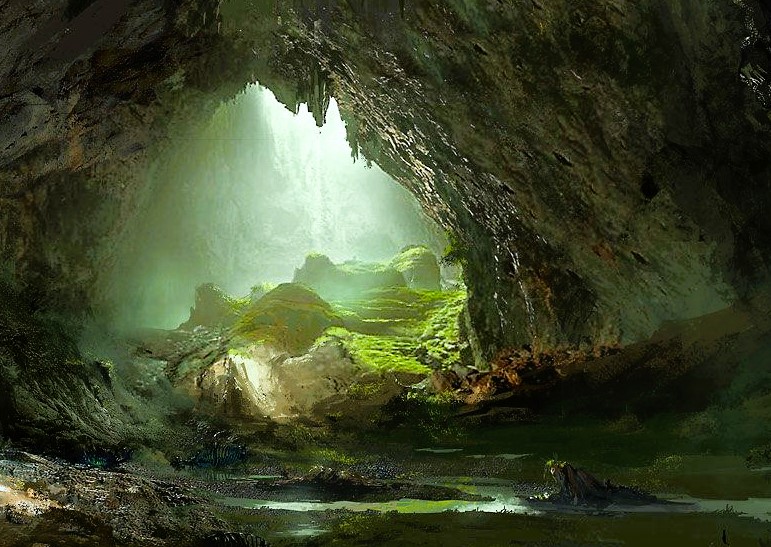Random Dungeon Generator (RDG)
The Random Dungeon Generator is a structured system designed primarily for solo play, allowing players to experience unpredictable dungeon environments without the need for a dungeon master. It provides a reliable framework for generating dungeons on the fly, offering a blend of randomness and structured design to ensure a balanced, immersive experience. While it can be used by DM to create spontaneous settings during gameplay, its primary function is to serve as a tool for players who wish to challenge themselves in self-guided exploration or refine their understanding of dungeon structure and encounter pacing.
Contents
When using this system, the adventuring party always begins outside the dungeon, positioned within 50 to 100 feet of its entrance. The type of entrance is determined by the first table in the generator, varying from concealed cave mouths and ancient ruin doorways to imposing gates or forgotten sinkholes leading underground. This entry point sets the initial tone of the adventure, defining the dungeon's nature before exploration begins.
The Random Dungeon Generator ensures a dynamic and self-sustaining experience, offering a means of progressing through encounters, hazards and rewards without requiring pre-planning or external guidance. It is designed to facilitate both quick, casual play and extended dungeon-crawling sessions, making it a valuable resource for those seeking independent play. Links to this page, as well as related dungeon generation tools, are designated with the "RDG" identifier and categorised under "Random Dungeon" for ease of access.
| Roll | Result |
|---|---|
| 01-16 | Burrow; tunnels or holes excavated by animals to create a protected living space. |
| 17-47 | Cave; natural underground space large enough for moving through, formed by geological processes. |
| 48-54 | Crypt; humanoid-made catacombs or vaults for sequestering the dead. |
| 55-00 | Tunnels; passages or networks created by humanoids for habitation, transport or defense. |
Dungeon Form
To continue after obtaining the table's result, open the links below that give access to each dungeon type. These links lead to specific dungeon generation pages tailored to different environments, ensuring that each dungeon reflects its unique characteristics.
Burrows typically serve as compact abodes for creatures like badgers, giant rats and various insects, whether solitary or social. Situated close to the surface, they rarely boast treasure. However, they may overlay other dungeon structures, a potential result that is accommodated by the generator. Burrows often consist of cramped, winding tunnels that can collapse under too much weight or excavation, making them hazardous for larger creatures. While typically unremarkable, they sometimes serve as hidden passageways or secret entrances to more complex underground locations.
Caves are natural rocky formations that present perilous terrains requiring specialised gear for safe navigation. Though sparsely inhabited compared to other dungeons, their intricate passages often delve deep into the earth, potentially intersecting with burrows and tunnels. Water sources, such as underground rivers and pools, may attract dangerous wildlife or serve as barriers to deeper sections of the cave. The irregularity of cave formations makes mapping difficult, with shifting passages and hidden crevices leading to unexpected discoveries or threats.
Crypts, seldom encountered and modestly sized, are usually without links to other dungeons. They provide spaces for undead, demons and other dark, sinister beings. A crypt may have been built as an annex to a tunnel-dungeon, to house the dead of the residents over several generations. These spaces are often filled with elaborate carvings, preserved corpses and cursed relics that guard the tombs of the long-dead. The air is heavy with the scent of decay and incense, lingering remnants of old rites that may still carry power.
Tunnels represent densely occupied areas populated by humanoids dwelling within numerous dens. Continuously expanding, they're forced to defend their areas against surface and burrowing creatures and other intruders; this allows for fortifications, trapped areas and various forms of construction. Some tunnel networks grow chaotically, creating maze-like passages filled with blind turns and sudden dead ends. Others follow strict patterns, indicating intelligent planning and a long-standing settlement with its own defenses and hierarchy.
